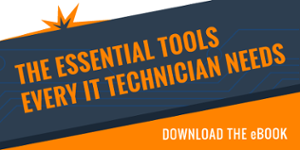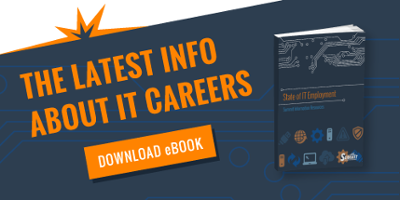Enterprise, enterprise IT, or enterprise–class IT are modern terms we hear bandied about nearly everywhere in business today but knowing exactly what marketers mean when they use these terms can be somewhat confusing, especially when the word enterprise appears to refer to a myriad of computer related technology solutions. Even more confusing is what exactly you should be looking for when it comes to enterprise solutions.
So, what is enterprise?
Enterprise generally refers to solutions designed to meet the complex needs of larger organizations. This can mean everything from software and hardware to cloud services and more.
What makes enterprise solutions different?
Bigger organizations have bigger requirements for compatibility, performance, reliability, security, and scalability than many of their small and mid-sized counterparts. These solutions are not just about solving an issue within your organization on a one-to-one level but more about an overarching strategy that allows you to meet the greater needs of a larger and more demanding company.
Enterprise solutions are designed to provide a scalable and easier-to-manage, company-wide solution for information and access, whether onsite or off at a remote location. For example, with regards to software, this means an enterprise license covers all locations (where a site license would cover only one location). This enterprise license would also include features that you might typically need for a multi-site, multi-server solution.
While enterprise software is typically internal facing (or mission critical for widespread users across the company) and integrated with other internal and/or external facing systems, it should be noted that there are certain circumstances in which a smaller organization could benefit from an enterprise solution, like those scenarios where the nature of their business requires or benefits from integrating with a larger organization regularly and in a significant way. A good example might be a physician’s office that shares their medical records with a local hospital for labs, referrals, and insurance claims.
Enterprise considerations
Before deciding on any enterprise solution, you must first consider your organization’s needs and list all your requirements, desired features, and their order of priority so that you can make an informed choice for your company, balancing those needs against your available budget. Here are some things you should look out for:
Security: This is the #1 priority of any network but enterprise security solutions should provide an even more rigorous standard. This is because the risks and stakes are higher. What will it take to be secure and make sure your data remains uncompromised? This must be a “big picture” view across applications, processes, and even mobile devices, allowing you lifetime control of your content.
Reliability: According to Western Digital Corporation’s 2nd annual global survey of CIOs and IT decision makers, reliability outranks cost as the most important strategic consideration for the storage of network data. It’s pretty simple really if your enterprise solutions aren’t reliable and your data is not securely accessible, then the network isn’t working.
Scalability: Will your new solution be able to grow with you to accommodate the needs and changes in your business easily? The ability to adapt to new or changing demands within your organization is crucial to the speed with which your enterprise can expand.
Management: Does the solution provide a full-featured platform with the ability to manage your implementation as well as support the entire lifecycle and all roles? Does it offer enterprise-wide reporting, management of policies, and administration for sync, share, and control at the user level? How about in a mobile environment? Can you provision and onboard users, managing their individual and group needs and policies?
Productivity: Regardless of the other criteria, if your end-users can’t accomplish their goals with the use of the solution—then it’s no solution at all. This means your solution not only has to support day-to-day work and ensure file-sharing is easy to use and adopt, but it should integrate with existing technology in use, and be well supported and managed.
Portability: Can your solution weather technological changes? Will it transfer easily from one system to another?
Cost: Should fit the bill to get started, providing all that is crucial to the ability for expansion as needed.
Support: Looking to maximize your IT resources? Keep and eye out for end-to-end solutions that help you manage IT operations and provide 24/7 troubleshooting, support, and service.
Bottom line is, if your business is robust enough in traffic, sales, or sheer logistics, you may be in need of a solution that’s not only large enough to seamlessly handle your company’s demands but also strategic enough to help you make that leap to the next level.






